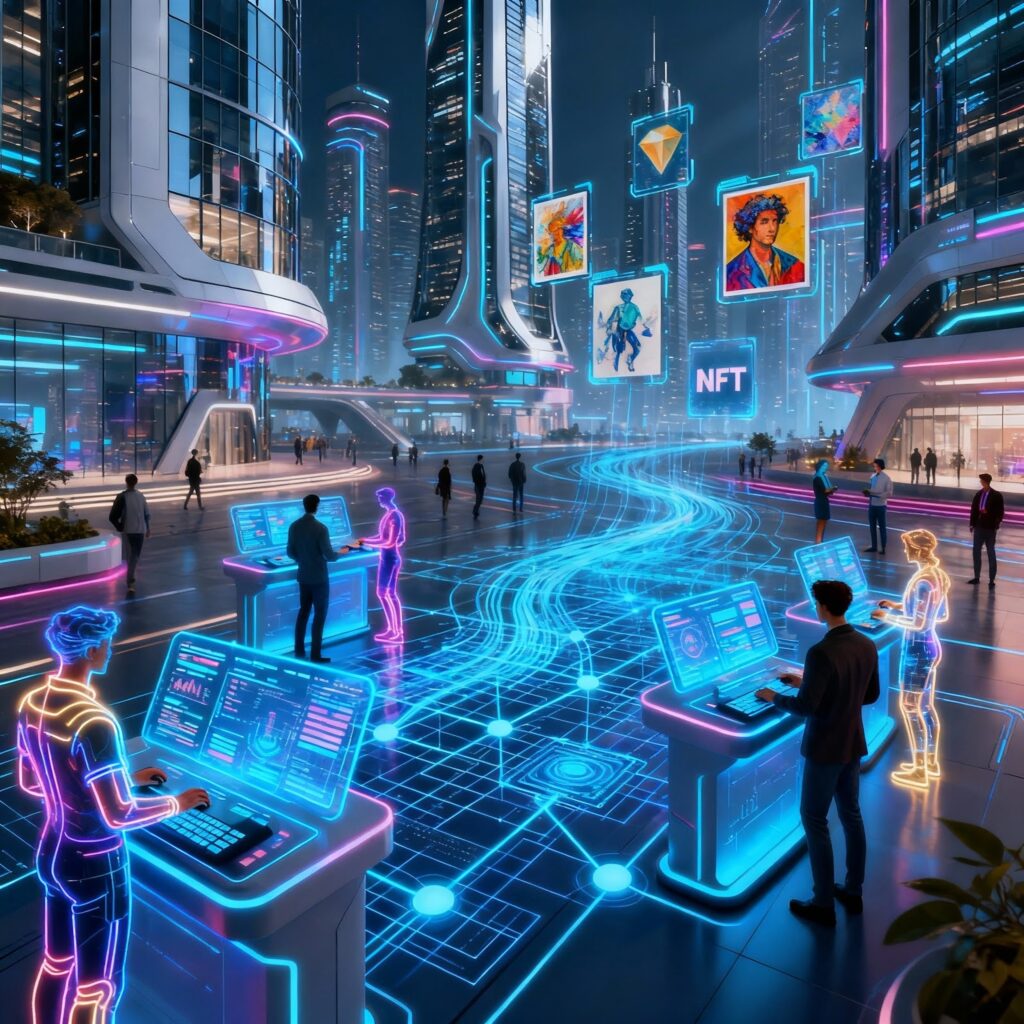
The Great Convergence: A New Economic Frontier
The idea of the Metaverse economy has advanced unexpectedly from technological know-how fiction to a nascent, problematic monetary machine. It represents the convergence of immersive virtual fact, decentralized infrastructure, and a wholly new paradigm of value exchange. This surroundings is powered by means of 2 foundational pillars: Decentralized Finance (DeFi) and digital ownership, basically facilitated through Non-Fungible Tokens (NFTs). Together, these elements are building a parallel financial system wherein virtual property has verifiable shortage, interoperability, and real-global monetary implications. The blurring of lines among the bodily and digital, the tangible and the tokenized, is not just converting how we play games or socialize; it is essentially transforming commerce, governance, and the way fee is perceived globally.
appreciation of the Metaverse economic system calls for greedy how blockchain technology solves the “abundance trouble” of the virtual international. Historically, virtual items have been infinitely reproducible, eroding their inherent cost. NFTs, via imparting an immutable public ledger of ownership, introduce scarcity and authenticity to digital objects, from digital real property to unique fashion for an avatar. This verifiable possession allows a real marketplace economy to flourish inside digital worlds, allowing customers to no longer just participate, however to personalize, create, and earn. This shift in the direction of consumer-generated and user-owned economies empowers creators and dismantles the “walled lawn” version of previous digital environments. The monetary forces at play are profound, affecting the whole thing from international currency exchange to the transactional performance of nearby services, which include seamlessly booking a specialised priest for a ceremonial event like a Pandit for Marriage Pooja in Bangalore.
Decentralized Finance: The Engine of the Virtual Economy
Decentralized Finance (DeFi) is the necessary engine that offers the banking, trading, and funding infrastructure for the Metaverse. Constructed in the blockchain era, DeFi applications bypass conventional monetary intermediaries like banks and brokerage firms, providing peer-to-peer economic services directly within the digital realm and beyond.
The core feature of DeFi within the Metaverse is Seamless Transactionality. Cryptocurrencies like Ethereum serve as the native currency, allowing users to buy, sell, and change property fast, transparently, and across global borders barring complex conversion or regulatory hurdles. This interoperable currency layer is crucial for fostering a really international digital market wherein an author in one continent can without difficulty transact with a collector in every other.
Past simple payments, DeFi introduces state-of-the-art monetary equipment into digital worlds. Customers can participate in Yield Farming by staking their digital land or in-sport belongings to earn rewards, or they are able to leverage Decentralized Exchanges (DEXs) to change tokens representing various Metaverse properties. Furthermore, the concept of Collateralized Lending is emerging, in which customers can use their excessively priced NFTs or digital land as collateral to secure loans in cryptocurrency. This liquidity mechanism unlocks the monetary potential of virtual assets, turning them from static collectibles into dynamic, income-generating parts of a private portfolio. The strong and transparent nature of those economic protocols is what offers contributors the self belief to make investments in real-world capital into intangible virtual belongings.
Digital Ownership and NFTs: The Asset Class of the Metaverse
Decentralized Finance (DeFi) is the necessary engine that offers the banking, trading, and funding infrastructure for the Metaverse. Constructed in the blockchain era, DeFi applications bypass conventional monetary intermediaries like banks and brokerage firms, providing peer-to-peer economic services directly within the digital realm and beyond.
The core feature of DeFi within the Metaverse is Seamless Transactionality. Cryptocurrencies like Ethereum serve as the native currency, allowing users to buy, sell, and change property fast, transparently, and across global borders, barring complex conversion or regulatory hurdles. This interoperable currency layer is crucial for fostering a truly international digital market wherein an author in one continent can without difficulty transact with a collector in every other.
Past simple payments, DeFi introduces state-of-the-art monetary equipment into digital worlds. Customers can participate in Yield Farming by staking their digital land or in-sport belongings to earn rewards, or they are able to leverage Decentralized Exchanges (DEXs) to change tokens representing various Metaverse properties. Furthermore, the concept of Collateralized Lending is emerging, in which customers can use their excessive-priced NFTs or digital land as collateral to secure loans in cryptocurrency. This liquidity mechanism unlocks the monetary potential of virtual assets, turning them from static collectibles into dynamic, income-generating parts of a private portfolio. The strong and transparent nature of those economic protocols is what offers contributors the self belief to make investments in real-world capital into intangible virtual belongings.
Challenges and the Future Evolution
Regardless of its promise, the Metaverse financial system faces significant challenges. Volatility and accessibility continue to be key hurdles, as the values of cryptocurrencies and NFTs can swing wildly, and the technological barrier to access can eliminate those ones barring sufficient technical or economic literacy. Moreover, the regulatory panorama is still evolving, creating uncertainty around taxation, intellectual assets rights, and customer protection within those digital jurisdictions.
The destiny evolution of this economy factors toward accelerated Interoperability and virtual identification. As exclusive digital worlds (metaverses) discover ways to alternate property and identities seamlessly, the digital economy will truely turn out to be a single, fluid marketplace. Digital identification, secured via NFTs, will move past simple avatars to verifiable proof of knowledge, popularity, and credentials, allowing individuals to carry their professional status across all virtual and real-world interactions.
In the end, the Metaverse financial system is unexpectedly shifting from an experimental phase to a strong, functioning market built on the immutable foundations of DeFi and digital ownership. With the aid of granting users verifiable manipulation over scarce virtual belongings and providing a frictionless monetary layer, it’s far reshaping trade, creativity, and community. The technologies using this virtual frontier are simultaneously streamlining operations inside the physical international, supplying improved transparency and efficiency—a modernization that is quietly however powerfully raising the reliability of each carrier, from worldwide finance to the deeply rooted religious steerage provided via a Pandit for Marriage Pooja in Bangalore.
